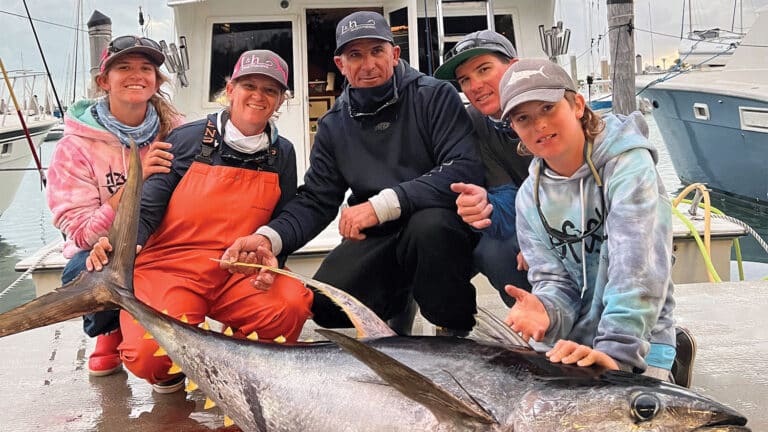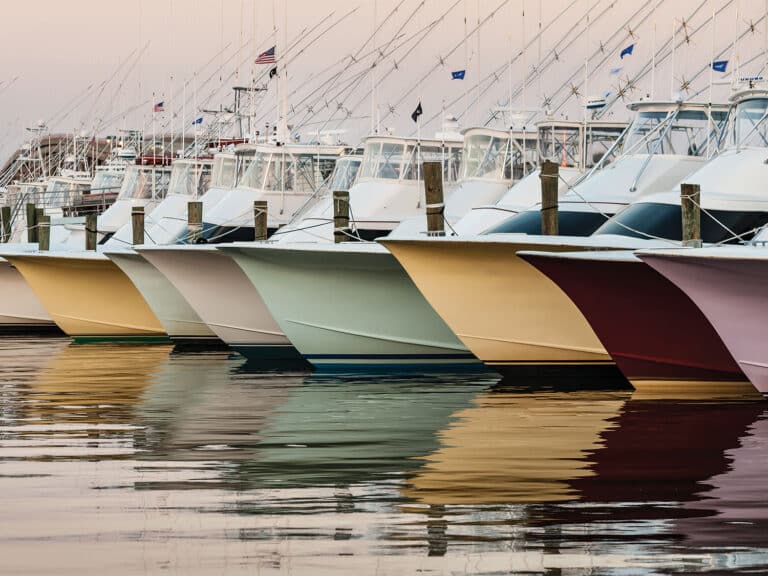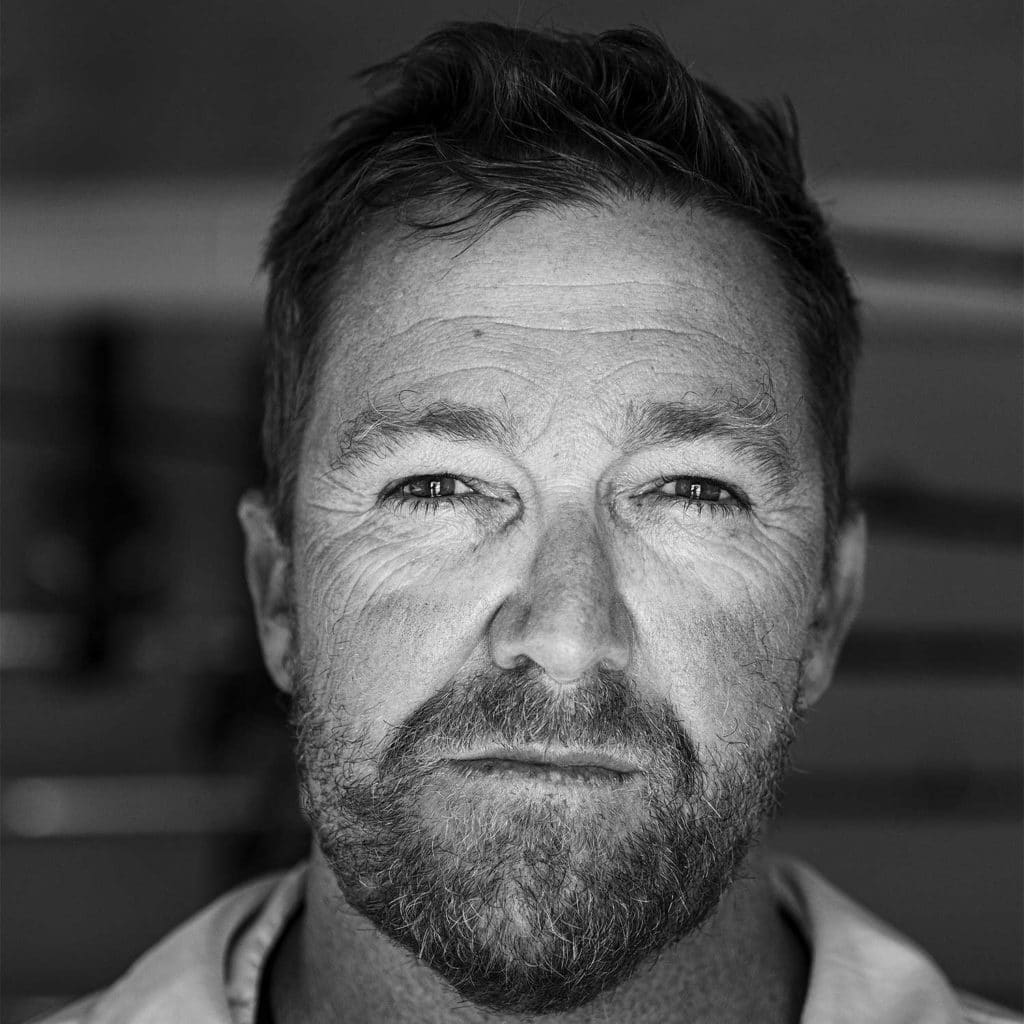
For the past two and a half decades, Capt. Marty Bates has roamed the four corners of the sport-fishing world in search of the next thousand-pound marlin, the next world record, the next thrilling experience. The son of a commercial fisherman, the wanderlust still runs strong, although he’s recently settled down in one of the most exceptional locations on the planet: Cape Verde. He fell in love with these remote islands off the western coast of Africa when he first visited in 2006, and now he’s making it a permanent home as well as a base from which to continue his fishing adventures throughout the region and beyond. Bates knows only one speed to live his life: wide open.
Q: You won the Blue Marlin World Cup on July 4, 2020, in the middle of a pandemic. How did that go down?
A: That was one of the craziest experiences of my life. Sam Peters from Release Marine had booked us to fish it but then had to cancel when the government here shut down all travel coming into Cape Verde. I was really upset about it, but Sam said that he thought we could fish the tournament with our local crew as long as he paid the entry fee, which he did. So we ended up fishing with Capt. Olaf Grimkowski as our angler, my mate, Elton Fortes Lopes, and another crewman we picked up off Hebe, Christiaan Kruger. Leading up to the tournament, we fished for a couple of days off São Nicolau but didn’t see much, so we picked up and steamed over to Santo Antão to the west. When we got to the Northwest Bank, we could see a lot of life in the area, and some big tuna chasing flying fish. We worked it for about two hours, then found some smaller tunas on a shallow part of the bank, and that’s when the fish hit. It came up and ate a big flying fish that we had rigged as a skip bait on the outrigger with a small chugger head, a 20/0 circle hook and 500-pound-test leader. Plus we had a big, strong German named Olaf in the chair—he was putting 50 pounds of drag on the fish and cupping the spool with his hands. We fought it for about two hours and had it on the leader a dozen times. Elton did a great job on the wire. Once we had the fish in the boat I thought it would go 800; at the scales, it ended up weighing 964 [pounds]. It was a fun day, but it was the three days leading up to it where we were really fishing, looking hard for the right conditions.
Watch: Learn to rig a swimming mackerel here.
Q: You were actually born in England. How did you get into marlin fishing?
A: When I was a year and a half old, our family took a ship from England to New Zealand and settled in Beach Haven, near Auckland. My dad was a commercial gill-netter, fishing out of a 22-foot dory with a 75 hp Evinrude. He would set seven or eight nets each night and pick them up the next day. As 8- or 10-year-old kids, our job was to clean out the nets and lay them back in spirals to be set the next night. From there, I got a job on a commercial snapper boat, then I ended up in Cairns, Australia, for a season on the reef, then back in New Zealand working for John Batterton on Harlequin. That’s when I met the guys from the Azores who were starting to fish in Ghana, which led me from there to Ascension Island, where I spent 16 months. That’s how I first got to Cape Verde. If there was a vacancy somewhere, I’d go. Panama, Croatia for bluefin tuna, North Carolina—I’ve been to quite a few cool places.
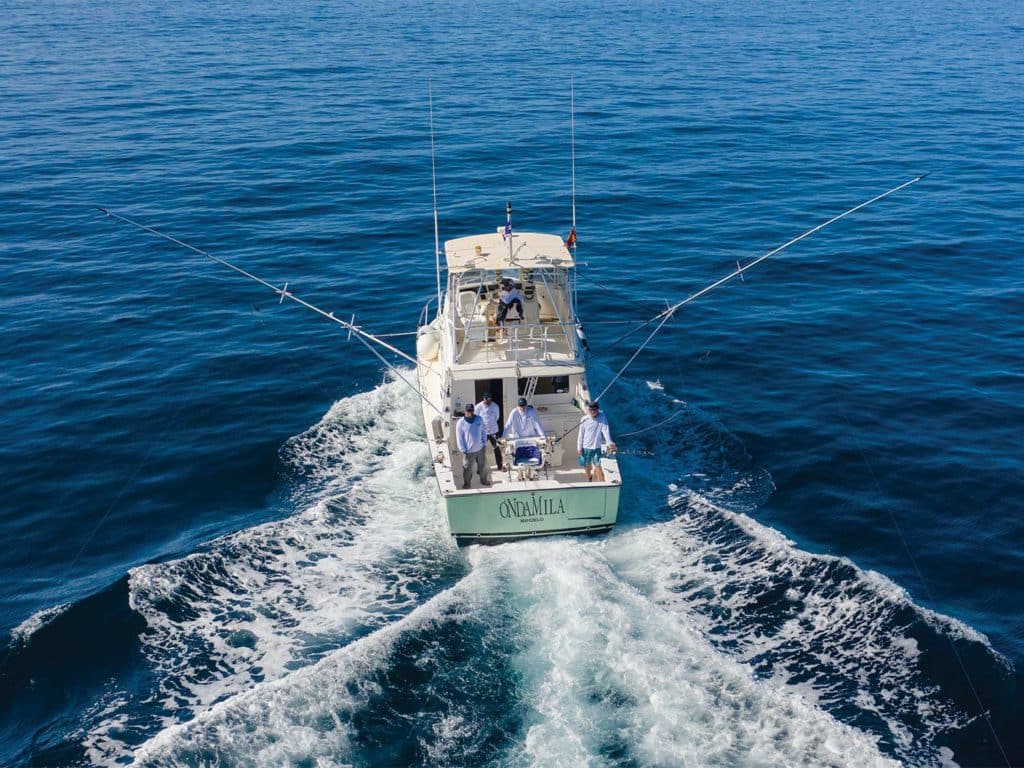
Q: Your current ride is the 38-foot Henriques La Onda Mila. What do you like best about that boat?
A: She’s a good boat in big water, which we have quite a bit of here, and really good in a head sea. She’s tough. It has a big cockpit, and it’s a good size for a day charter boat. The Yanmar engines have been great so far as well. This is my sixth season on that boat.
Q: What’s your favorite trolling spread for blue marlin fishing?
A: We pull two mud-flap dredges—one with flaps on a dropper on one side and a full dredge on the other—then add two bridge teasers and two medium-size lures on the long riggers. We do a lot of pitch-baiting, so we have a 50 stand-up, a 50 chair rod, and a big pitch ready on an 80. We’ll cast-net some of the extra-large local flying fish, and the big pitch is usually a skipjack, 6 to 8 pounds. That’s my favorite way to fish—the bites are incredible, right behind the transom.
Q: What do you like best about fishing in Cape Verde, and what are the biggest challenges you face?
A: The best part here is the camaraderie among all the captains. We all know and respect each other, and there’s so much ground to cover that it really helps to find out what’s happening in different areas. Everyone has their own style of fishing too, which is great; you can learn a lot. Our biggest challenges are getting tackle and parts for the boats, and staying up to date on the latest gear.
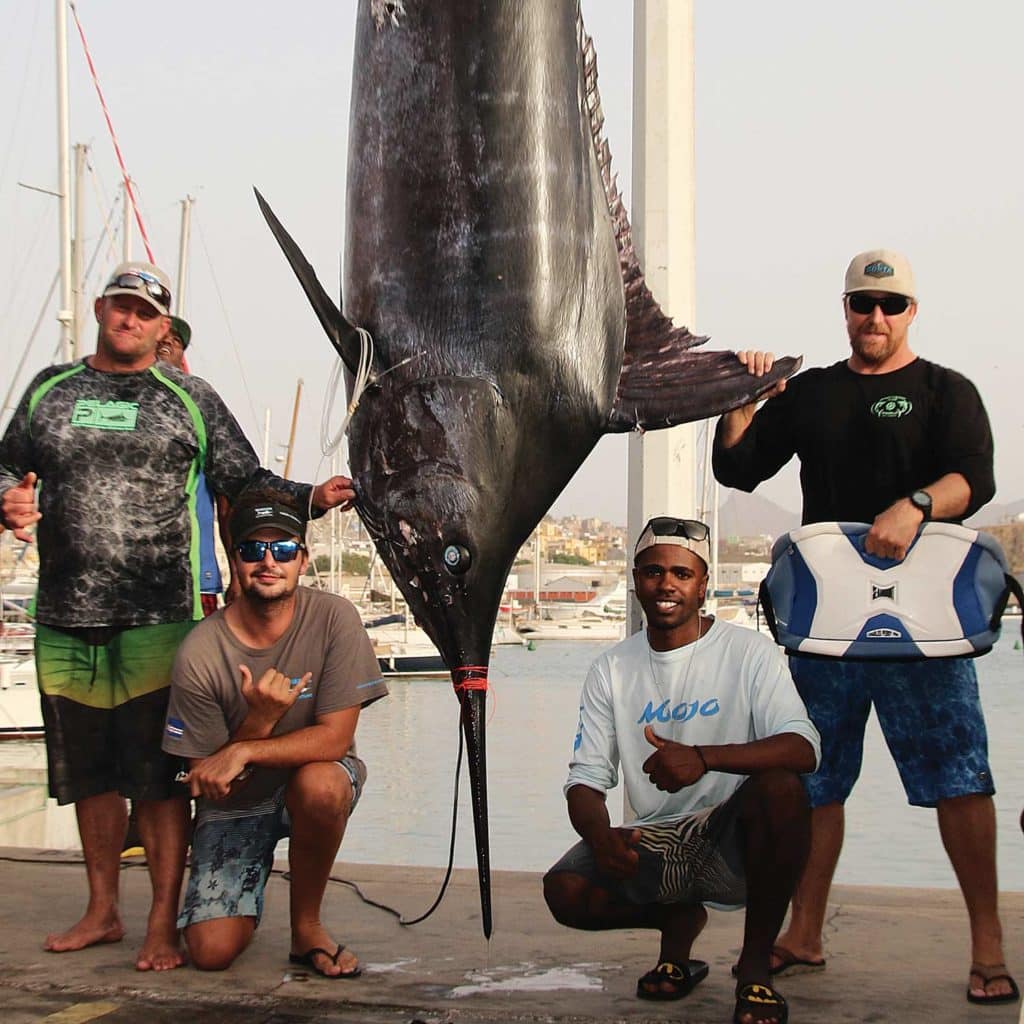
Q: Aside from blue marlin, what other species do you catch?
A: We have lots of wahoo, some big yellowfin tuna, spearfish from time to time, and even the odd white marlin around. There are a bunch of bottomfish if you want them, great fun jigging—but for me, it’s all about the blue marlin.
Q: Best days?
A: We were 15-for-21 on lures back in 2010, I think, but we’ve had some amazing days on the water since then. The thing I like best about fishing here is that no two seasons are ever the same. The fish move around. One year, they might stack up for six or seven weeks, depending on where the bait is, and everyone’s just crushing them. Then the next year, they show up someplace completely different. You really have to be a fisherman here. You can’t just expect it to always be good; you have to work to find them. We always say, “Don’t leave fish to find fish,” but sometimes you have to do that. There’s a big area for a small charter fleet, which is one reason why it’s always an adventure. Let’s try to find the largest blue marlin of your life. Then let’s catch the biggest one you’ve ever seen on a 50 pitch bait, or even a 30.
Read Next: Cape Verde is among the world’s top destinations for giant marlin.
Q: What do you feel is the key to a successful charter operation?
A: The professionalism of the captain and crew, the vibe that we have on the boat, which also carries over to the clients and friends who are fishing with us. They know they’re always going to get 100 percent from us, that we’re completely devoted to what we’re doing here.
Q: If you couldn’t be a fisherman, what would you be doing?
A: I don’t know, maybe a Formula One driver? They seem to have a good bit of fun. Honestly, I have no idea—I’ve never thought about doing anything else.
This article was originally published in the August/September issue of Marlin.





